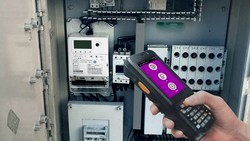The world of electricity generation and distribution is undergoing a transformative shift as countries strive to find sustainable solutions and prepare for a future with limited resources such as oil, gas, and coal. The ability to connect to the grid and efficiently interact with various energy sources is becoming increasingly critical. At the heart of this evolution are power conversion technologies, which play a central role in supporting bidirectional power flows, enabling diverse energy sources to contribute to grid services, and facilitating the long-distance transmission of renewable energy. Ongoing advancements in power electronic designs and control systems are essential to minimize losses, increase the capacity factors for renewable sources, and enhance the stability and reliability of the grid.
Electric Vehicle Integration
An area ripe for advancement in power conversion involves the bidirectional charging capabilities of electric vehicles (EVs). The substantial battery systems in EVs could serve the grid, akin to virtual power plants, by feeding energy back into the network during peak demand or to counterbalance the variability of renewable sources. Realizing this potential necessitates vehicle-integrated bidirectional chargers and a robust control infrastructure. Efforts are underway to refine hardware designs and establish digital communication protocols to optimize efficiency and facilitate smooth vehicle-grid integration without sacrificing convenience or battery longevity. Early assessments suggest that by 2030, if bidirectional charging gains widespread adoption, EV fleets could contribute significantly to the total energy system capacity. Manufacturers are introducing first-generation bidirectional chargers, and it is anticipated that further miniaturization in power electronics will reduce costs.
Services from Distributed Energy Resources
Distributed energy resources (DERs), such as rooftop solar panels, energy storage systems, and responsive loads, offer potential support for the grid but require sophisticated coordination. Power conversion enhancements allow these assets to share operational data with grid operators instantaneously and modify power output as conditions change. For instance, solar inverters are now integrating advanced algorithms and optimization routines to provide services like ramp rate control, voltage regulation, and frequency support. Power converters linked with energy storage systems can release energy precisely when it's necessary for grid balance or peak demand reduction. Studies on the collective impact of DERs providing ancillary services through virtual power plants suggest a possible reduction in the need for traditional generation capacity investments. Efforts continue to fine-tune the coordination of diverse DER types through integrated converter technologies.
High-Voltage Direct Current Transmission
The role of high-voltage direct current (HVDC) transmission is expanding, especially with voltage-source converters (VSCs), in linking remote renewable energy sources to urban areas and connecting separate grids. Innovative semiconductor materials like silicon carbide have enhanced switching capabilities, leading to higher converter performance, reduced losses, and more compact equipment. This makes HVDC an attractive option even for challenging installations, such as subsea or underground cabling. As renewable energy becomes more prevalent, VSC-HVDC can help balance different wind and solar zones by distributing power across multiple corridors. System operators are considering coordinated HVDC networks as alternatives to traditional transmission methods, with studies indicating substantial savings through optimized power distribution. Research is directed toward creating universal control systems for easy integration between various converter stations.
Quantitative Modelling and Assessment
Comprehensive assessments have evaluated technological advancements and their potential impact on the grid. For instance, national lab studies have shown that even a slight reduction in renewable energy curtailment could lead to significant economic benefits. Similarly, simulations incorporating detailed converter models have demonstrated that strategic power control from distributed storage and solar systems could substantially decrease annual costs related to transmission congestion. These assessments underscore the economic rationale for continued investment in power conversion technologies, not only on a large scale but also within local distribution networks. The next stage of research is developing platforms that can capture the intricate interplay between transmission, distribution, and distributed energy resources, with the aim of optimizing the entire energy system.
Takeaway
The evolution of power conversion technologies is crucial in transitioning towards a sustainable future. With the finite nature of traditional energy sources, the focus on enhancing grid adaptability, integrating electric vehicles, leveraging distributed energy resources, and expanding high-voltage direct current transmission systems is more pertinent than ever. These advancements are not only technically feasible but also economically viable, promising a more resilient and efficient energy landscape. By continuing to refine power conversion systems, we are paving the way for a robust, renewable-centric grid that can meet the demands of tomorrow.
If you have any inquiries or need further information about our power conversion systems for energy storage, please do not hesitate to reach out to us. We are here to assist you and welcome your valuable thoughts and comments.
Until then, keep shining bright like a solar panel on a sunny day!





All comments are moderated before being published. Inappropriate or off-topic comments may not be approved.